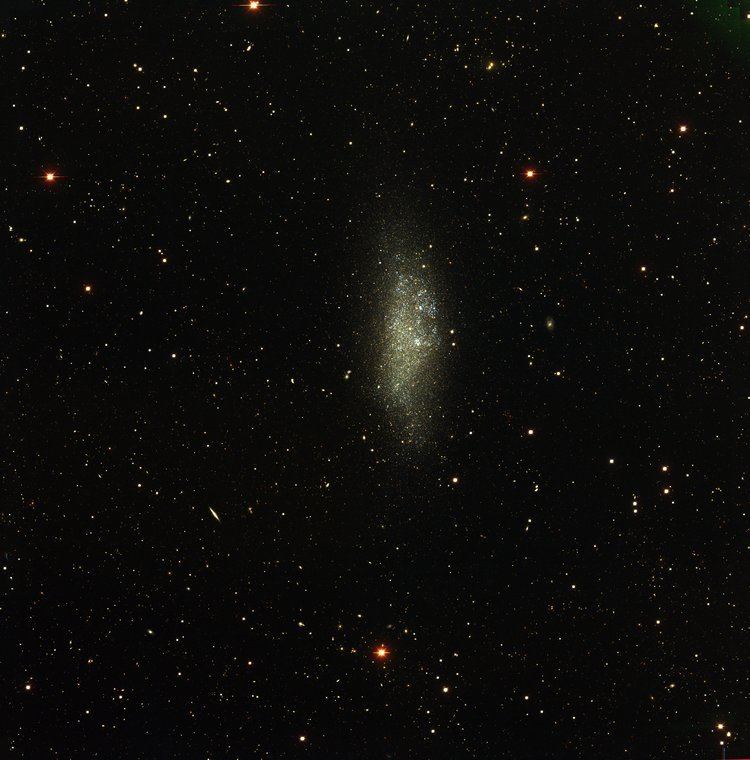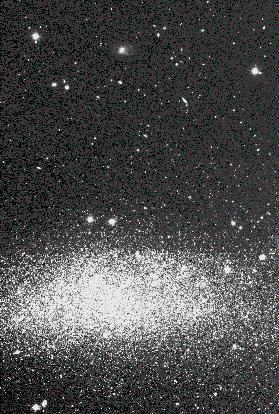Right ascension 00 01 58.1 Redshift -122 ± 2 km/s Magnitude 11 Apparent size (V) 11′.5 × 4′.2 | Declination −15° 27′ 39″ Type IB(s)m Apparent magnitude (V) 11 | |
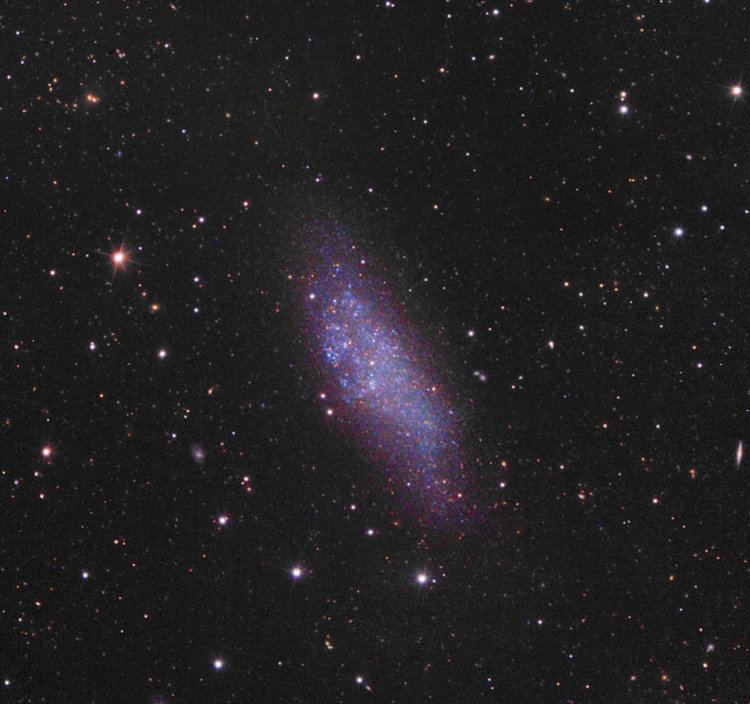 | ||
Distance 3.04 ± 0.11 Mly (930 ± 30 kpc) Similar IC 1613, Sextans B, Aquarius Dwarf, NGC 3109, Sextans A | ||
The Wolf–Lundmark–Melotte (WLM) is an irregular galaxy discovered in 1909 by Max Wolf, located on the outer edges of the Local Group. The discovery of the nature of the galaxy was accredited to Knut Lundmark and Philibert Jacques Melotte in 1926. It is in the constellation Cetus.
Contents
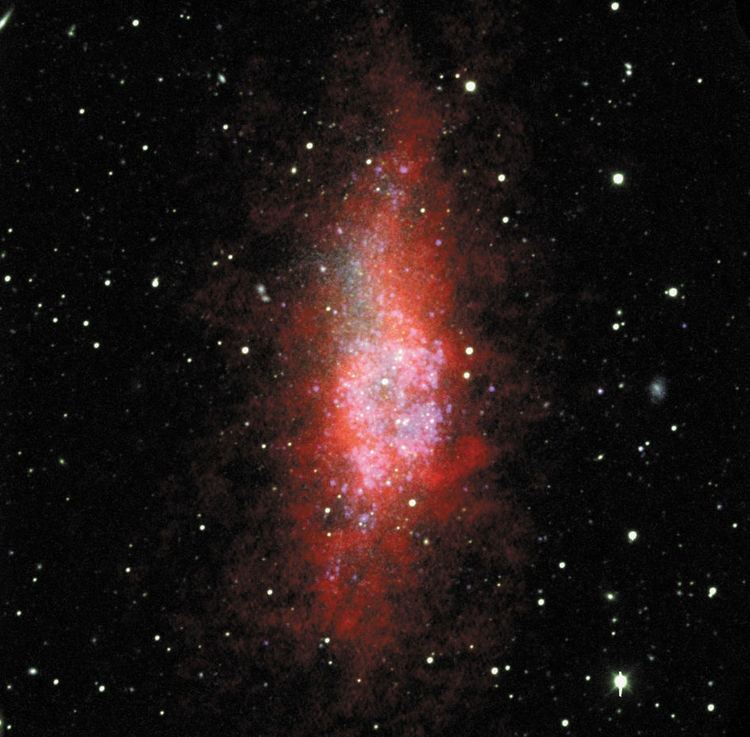
Star formation
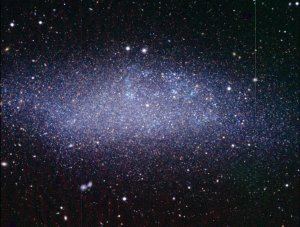
In 1994, A. E. Dolphin used the Hubble Space Telescope to create a color–magnitude diagram for WLM. It showed that around half of all the star formation in this galaxy occurred during a starburst that started ~13 Gyr ago. During the starburst, the metallicity of WLM rose from [Fe/H] ~ −2.2 to [Fe/H] −1.3. There being no horizontal-branch population, Dolphin concludes that no more than ~20 M☉ per Myr of star formation occurred in the period from 12 to 15 Gyr ago. From 2.5 to 9 Gyr ago, the mean rate of star formation was 100 to 200 M☉ per Myr. Being at the edge of the Local Group has also protected WLM from interactions and mergers with other galaxies, giving it a "pristine" stellar population and state that make it particularly useful for comparative studies.
Globular cluster
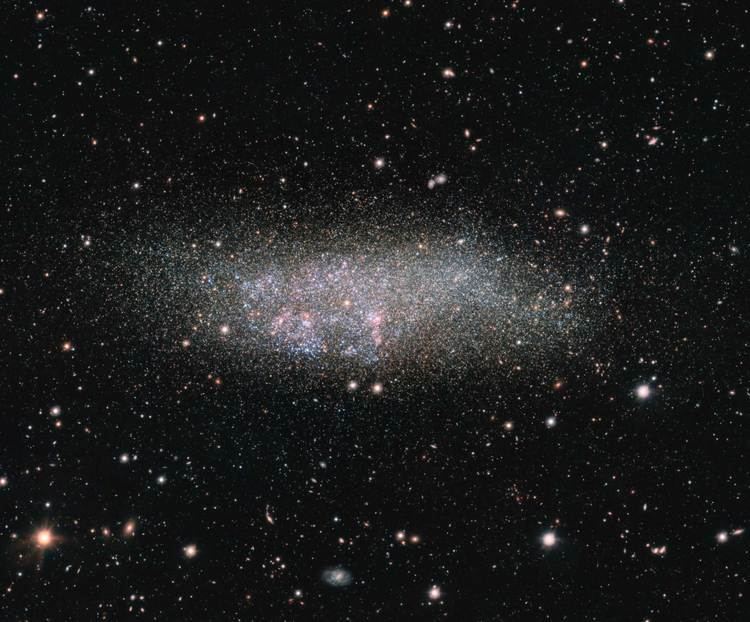
WLM has one known globular cluster (PGC 910901) at 00h 01m 29.5s −15° 27′ 51″ that Hodge et al. (1999) determined having an absolute magnitude of −8.8 and a metallicity of –1.5, with an age of ~15 billion years. This cluster has a luminosity that is slightly over the average for all globulars. The seeming lack of faint low-mass globular clusters cannot be explained by the weak tidal forces of the WLM system.

